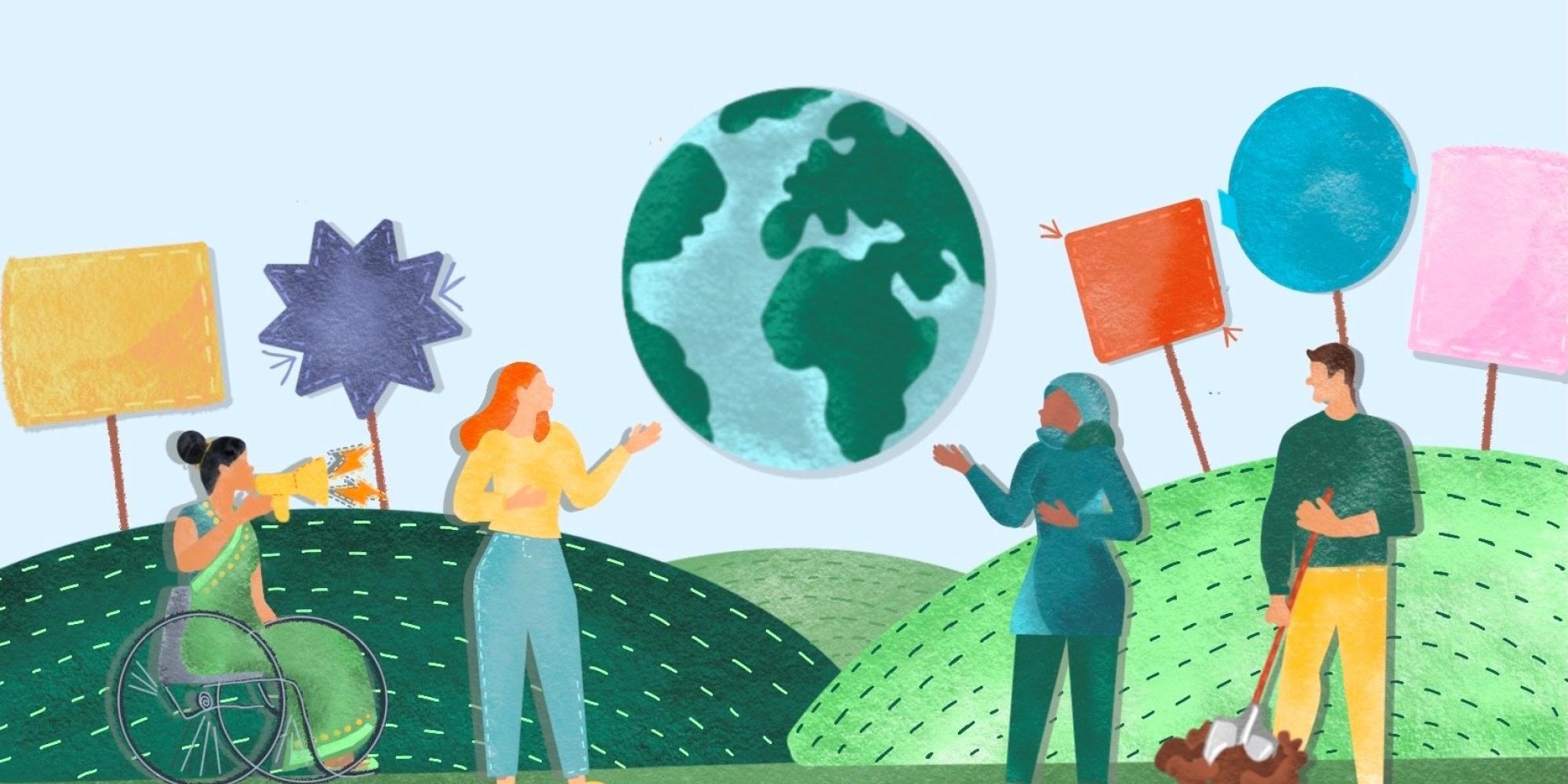
During COP26, Naomi Clugston, Technical Specialist at SDDirect spoke with Dr Nahid Rezwana, Associate Professor at Dhaka University; Rumana Khan, the GBV Cluster Coordinator for UNFPA; and Murshida Akhter, a Humanitarian Specialist for UNFPA.
Drawing on their insights on the intersection between GBV and Climate Change in Bangladesh and wider research, this blog highlights the key ways that climate change increases the risk of GBV and gives recommendations for policy makers and practitioners seeking to prevent and respond to the increased risks of GBV due to climate change.
Climate change not only puts our planet at risk of imminently becoming unlivable, it puts women at risk of immediate violence. Climate change and environmental degradation is already endangering communities, particularly those with limited resources to adapt. Some communities are being displaced by extreme weather events, others are facing food insecurity following droughts. In communities under pressure, women are at greater risk of GBV, which in turn, further limits their capacity to adapt and recover from climate-induced emergencies. This blog details how climate change exacerbates different types of GBV.
Communities under pressure may turn to harmful coping mechanisms like child marriage. In Bangladesh and elsewhere, climate change-related disasters such as floods, droughts and cyclones create financial insecurity for families who lose livelihoods. This increases the risk of child marriage, as families try to cover dowry costs and reduce the number of people in the household living on a limited income.
Climate change may lead to community conflict over resources which is often accompanied by targeted instances of GBV. Female-headed households are often less able to protect themselves from dispossession, including land theft, further limiting their resilience to climate-induced disasters.
When climate change puts livelihoods at risk, women may be required to take on additional jobs to support their families. This may limit their capacity to respond to the domestic demands of male family members and in-laws, and tensions related to women working outside the household or male unemployment may arise. Whilst gender equality is at the root of intimate partner violence (IPV), these factors increase the risk. Poorly designed humanitarian programmes, which exacerbate resource inequalities may also increase this risk.
Climate-induced disasters and environmental degradation may also increase domestic workloads traditionally carried out by women. For example, water scarcity may require women to travel longer distances to more remote locations to collect water. This in turn, puts women, at increased exposure to street-based violence and violence from strangers including armed groups in some contexts. Women with disabilities are particularly at risk following economic hardship and increased domestic workloads.
Climate change can lead to displacement and migration. When men migrate to find jobs elsewhere, women may be left with inadequate support and protection. When women migrate away from their support networks to find alternative livelihoods, their risk of exploitation and abuse, including pressure to engage in transactional sex, increases. When women are displaced, they may be forced to stay in unsafe transit centres, refugee centres, and other
temporary accommodation, placing them at greater risk of harm and sexual exploitation, abuse and harassment.
What can we do to prevent and respond?
Design gender-sensitive disaster management plans. In many contexts the impacts of climate change are increasingly predictable. In Bangladesh, we know that flooding and cyclones are set to increase in severity and frequency. In anticipation of this, disaster management plans must recognize that GBV is likely to increase in these contexts and become better equipped to respond to the needs of women and girls, including women and girls with disabilities. This could include preemptively establishing and communicating to women where safe temporary accommodation is located before flooding gets to a point where communities are displaced. It is essential that temporary accommodation is adequately funded and designed in partnership with the women who will use it. This is to ensure that the accommodation meets the needs of women and girls, and has the resources to prevent overcrowding and implement safety measures that protect women and girls from gender-based violence.
Work with women to design programmes that increase their resilience to climate change. Women are best placed to identify what they need to become more resilient to climate change. Practitioners should co-create programmes with women thatincrease their access to resources and that challenge power dynamics that put women at risk of exploitation and abuse in climate-change affected communities.
Mainstream GBV risk mitigation in all humanitarian interventions. Humanitarian interventions are well placed to reach women across communities. GBV risk mitigation and response programming is essential and life saving. Cash, WASH, food security, livelihood, and housing interventions should all engage with GBV risk mitigation and response to ensure the furthest reach and highest impact of this work.
Fund women’s rights organisations. Women’s organisations are often first responders in times of crisis, providing life saving information and care to communities. They remain acutely underfunded globally. Policy makers and practitioners should partner with and fund these organisations to support them to continue their invaluable work.
Fund research into the links between climate change and GBV. It is essential that policy makers and practitioners have the information they need to make evidence-based decisions. Researchers can play a key role in filling the gaps in evidence identified by those working on the ground.
Thank you to Dr Nahid Rezwana, Rumana Khan, and Murshida Akhter for their time and insightful contributions to this blog. Please find a full list of Dr Rezwana’s publications related to climate change and GBV prevention and response here.
Follow Social Development Direct’s Climate Justice blog series for more updates on how the climate crisis has impact from a social development, gender and inclusion perspective, and
how to ensure inclusive climate action.